It’s a Novel! It's a Comic! It's—Both?
More books are being adapted to graphic novels—and vice versa. These trends are expanding audiences and creating opportunities for creators. Here's what's hot right now.
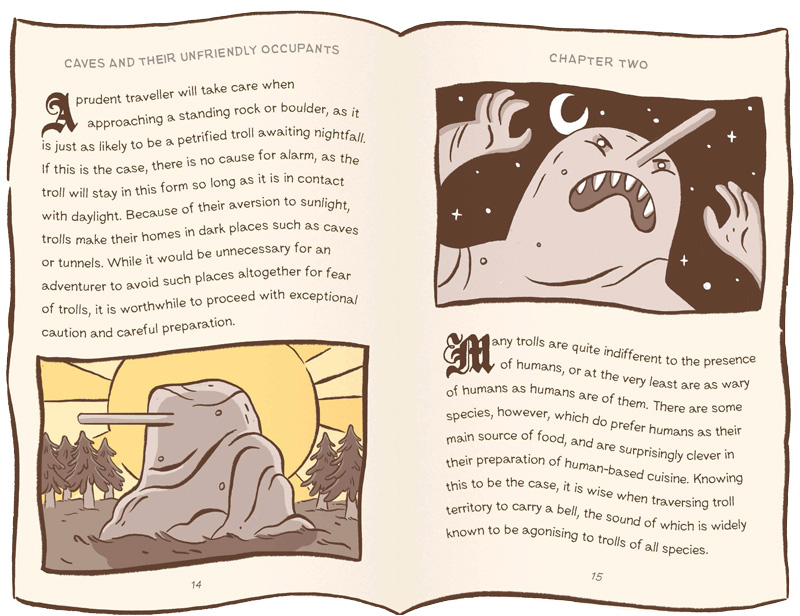 |
|
Hilda and the Hidden People, a middle grade novel based on Luke Pearson’s “Hilda” graphic novels. |
|
Also in this article: |
Graphic novel adaptations of prose works have been earning critical praise for some time. Now, with graphic novels firmly established on library shelves, publishers are turning to them as source material for novels and chapter books.
These trends are expanding audiences and creating opportunities for creators. While graphic novels can offer a surefire way to get developing readers into books, prose adaptations of graphic novels, too, provide a new avenue. They draw in comics fans who want more of their favorite characters—and readers who like the story line but not the graphic format.
“Superhero-based novelizations have natural appeal to comics fans,” says Tom Maluck, teen services librarian at the Richland Library in Columbia, SC. “But they have the most appeal with noncomics readers. I still meet habitual readers who confess they feel shy about reading a comic ‘the wrong way’ and getting lost. These kinds of serialized characters and stories benefit from fresh jumping-on points.”
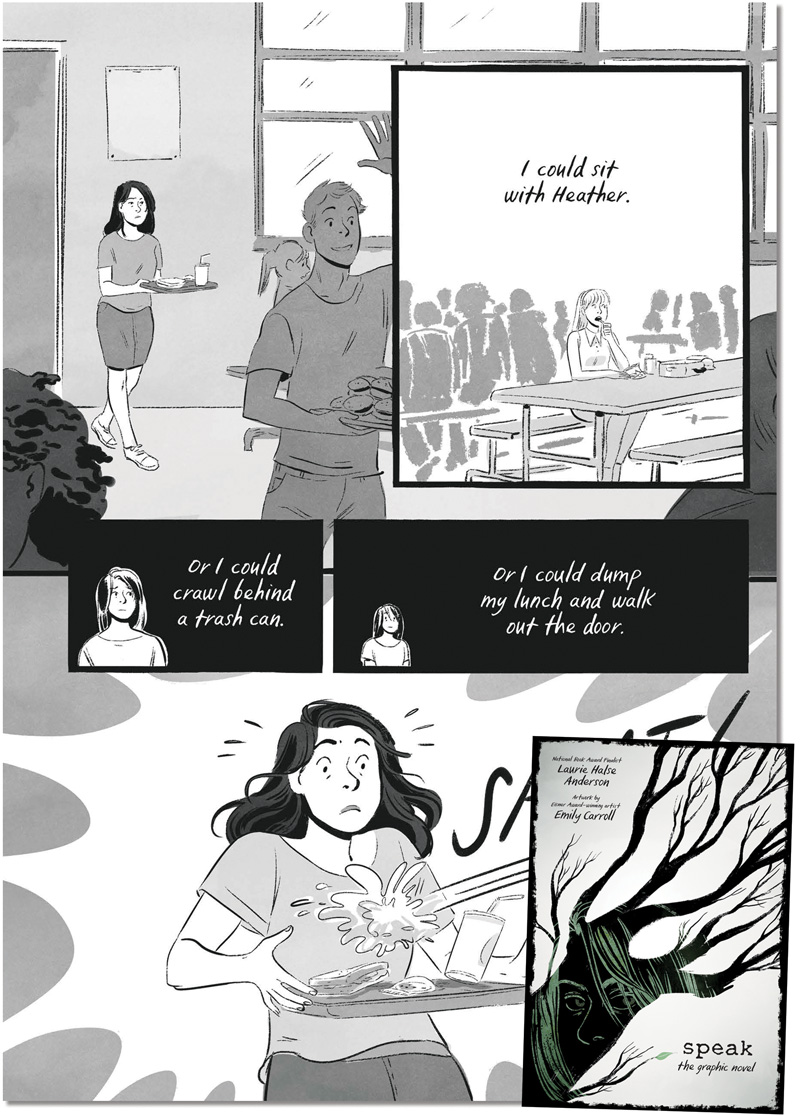 |
|
Speak: The Graphic Novel by Laurie Halse Anderson. |
The prose-comics continuum
In the prose-to-comics direction, even an award-winning, critically acclaimed novel such as Laurie Halse Anderson’s Speak can gain a new dimension when adapted to graphic format.
After reading some graphic novels that “really hit me in the feels,” Anderson says, she worked with artist Emily Carroll to create Speak: The Graphic Novel (Farrar, 2018).
“Carroll’s fantastic art allows the reader to see Melinda [the main character] from the outside, while the text shows what’s going on inside her head and heart,” Anderson says. “That elevates the story to a new level of intensity. We were also able to show the diversity of Merryweather High.” Fans of the graphic novel are picking up the original book, and vice versa, Anderson adds.
Among the publishing initiatives along the prose-comics continuum, superhero specialists DC Comics and Marvel have pointedly refocused their middle grade and young adult lines over the last three years, and independent publishers are bringing their comics characters to prose as well.
Abrams, for instance, picked up three BOOM! Studios properties for projects under its Amulet imprint—middle grade books based on “Lumberjanes” and “The Backstagers,” and a YA adaptation of “Giant Days.” Meanwhile, Nobrow/Flying Eye will publish Hilda and the Hidden People, the first of three middle grade novels based on Luke Pearson’s “Hilda” graphic novels, in September.
DC launched a series of middle grade novels as part of its “Super Hero Girls” line in 2016, and the “DC Icons” line of young adult novels debuted in 2017. Capstone’s array of DC-based books includes picture books, chapter books, and a YA series about Lois Lane, written by Gwenda Bond.
Meanwhile, Marvel Press’s series of early reader chapter books goes with its Marvel Super Hero Adventures program. It has also tapped popular middle grade and YA authors to write prose novels for older readers. Those include Jason Reynolds’s Miles Morales: Spider-Man (2017), Eoin Colfer’s Iron Man: The Gauntlet (2016), and Shannon and Dean Hale’s The Unbeatable Squirrel Girl: Squirrel Meets World (2017).
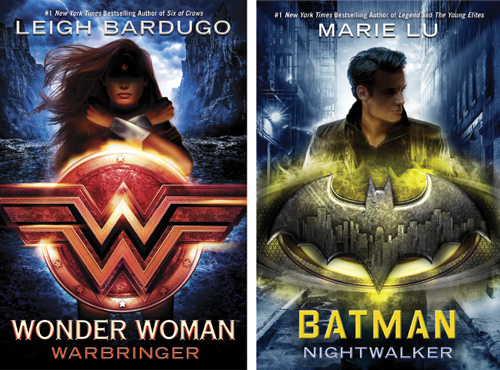 “The recent trend of putting star YA novelists on superhero properties is working like magic,” Maluck says. “The synergy works both ways: If I booktalk the author, readers will recognize a superhero among the books and grab it with the original title, and vice versa. Put the Batman logo on a book and it practically checks itself out. That’s been the case with Marie Lu’s Batman: Nightwalker.”
“The recent trend of putting star YA novelists on superhero properties is working like magic,” Maluck says. “The synergy works both ways: If I booktalk the author, readers will recognize a superhero among the books and grab it with the original title, and vice versa. Put the Batman logo on a book and it practically checks itself out. That’s been the case with Marie Lu’s Batman: Nightwalker.”
Desirable elements for nonsuperhero comic adaptation include “strong characters and worlds that have the potential for expansive storytelling and world-building beyond the comics format in order to attract new fans and readers,” says Abrams children’s books publisher Andrew Smith.
The Abrams titles are new stories set in the world of the comic, rather than straight adaptations of a single story arc. “We wanted to create original stories so that fans of the comics could come to the novels fresh, without feeling like they were getting a repetitive experience,” says Abrams editor Erica Finkel. “The world and characters of ‘Lumberjanes’ and ‘Giant Days’ are so vivid and detailed already. Our authors, Mariko Tamaki and Non Pratt, have had a lot of fun diving into these worlds and imagining new plotlines.”
Tamaki was already a fan of the series and jumped at the chance to write the books. “I wanted to keep the personality of the comics intact—that sense of fun and the connection the characters have,” she says. “I wanted to try and translate the lively nature of the comics into prose, because the comics have such a great rhythm.”
Tamaki made some changes, however. “Lumberjanes” features five girls at a summer camp, similar to Girl Scouts. “Writing a book about five characters is not easy,” she says. “The comics balance that very well, but comics are very different from prose in terms of point of view. I finally settled, after reading many books that do this very well, on an omniscient third-person narrator, who could act as a kind of tour guide. I love a lively narrator.” She also added several supporting characters, with permission from BOOM! Studios. “My favorite thing is coming up with badges, which is maybe one of the best Lumberjobs,” she says. “I would very much like to receive the Bust a Moose badge someday.”
The “Hilda” novels follow the plot of the Netflix animated series Hilda, which will debut this fall—but they add something more, says Hannah Moushabeck, associate director of sales and marketing for Nobrow/Flying Eye. “We aimed to make a book that would stand alone as a wonderful piece of literature,” she says. “Readers won’t have to have read the graphic novels or see the show to enjoy this trilogy. It offers a deeper insight into Hilda’s personality, emotions, and relationships, allowing existing fans to really get to know her in a new and exciting way, too.”
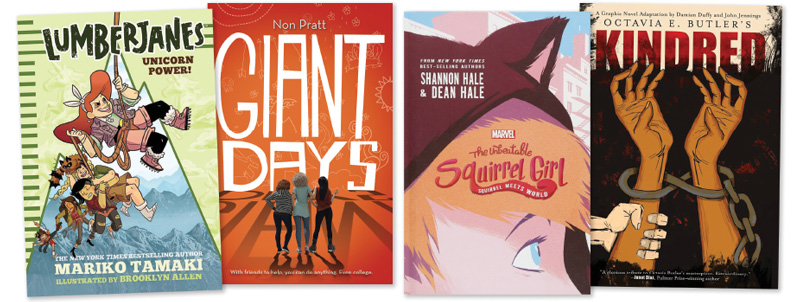
Getting graphic with novels
One of the most successful graphic novel adaptations of recent years is Damian Duffy and John Jennings’s version of Octavia Butler’s Kindred (Abrams, 2017), which has been nominated for a 2018 Eisner Award. Charles Kochman, editorial director of Abrams ComicArts, says the source material is key to such works.
“Octavia Butler is a very visual writer, and Kindred is a perfect example of a book that was ready for adaptation,” he says. “The graphic novel introduced Butler to a whole new generation of readers. But it also satisfied Butler’s fans, who are very protective of her work and wanted to make sure the material was in good hands.”
“Some books are just what they are, and making them into a graphic novel will not add anything to the reading experience,” Kochman adds. “But for those books where the writing is visual, the story is beloved, and there is a fan base that would be willing to give the adaptation a chance—or where you have an opportunity to introduce the story to a whole new audience—then an adaptation makes sense.”
Disney-Hyperion has produced several graphic adaptations of Rick Riordan’s “Percy Jackson and the Olympians” and Eoin Colfer’s “Artemis Fowl” series, with more on the way. “From a publishing perspective, it was an easy decision to expand the story experience into graphic novels,” says Tracey Keevan, executive editor at Disney-Hyperion Books for Children. “It helped, too, that the original books are cinematic gold mines, littered with heroes and demigods, criminal masterminds, and fairies, action, drama, humor. They were practically begging to be graphic novels.”
They also closely follow the plots of the originals, although some subplots may be cut or condensed. “We stay true to the voice and tone of the original novels,” Keevan says. In terms of crossover, she adds, “We know that fans are excited to relive the series through the graphic novels. We also know that many comic enthusiasts discover the series through the adaptations. In terms of readers circling back to read the original novels, we’ve heard positive anecdotal feedback that the graphic novels are a great way to snag reluctant readers and get them hooked on a series.”
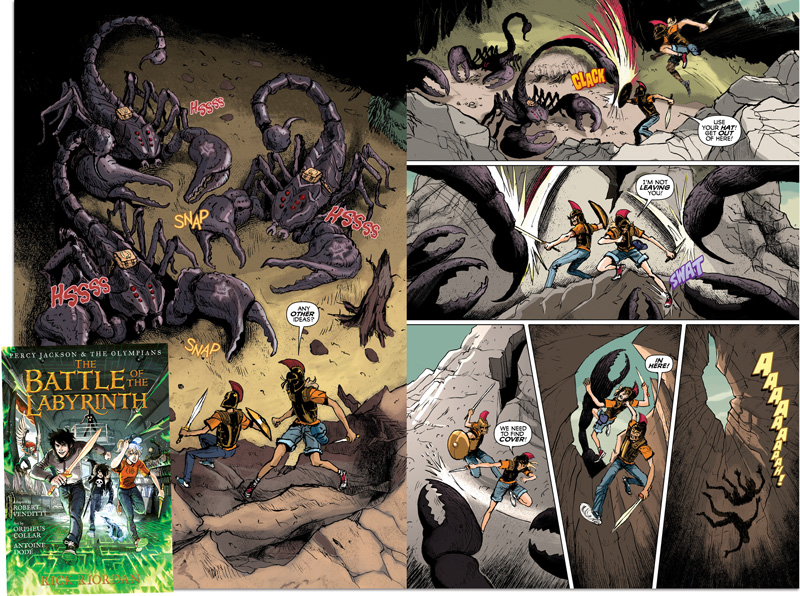 |
|
The graphic novel adaptation of Rick Riordan’s The Battle of the Labyrinth. |
It’s crossover time!
Robin Brenner, youth services librarian at the Brookline (MA) Public Library, says that while some comics fans are indifferent to prose versions of their favorites, others “devour everything related to the characters.”
“I’ve noted a mix of the author’s fans [and] the character’s fans checking them out,” says Brenner. “Leigh Bardugo and Marie Lu are both big deals and bring a lot of fans with them. Plus, in particular, the Wonder Woman appeal is strong.”
Maluck notes that the “Lumberjanes” and “Squirrel Girl” series for younger readers “are already about girls who love learning, so a multimedia approach feels natural.”
Parents often identify comics kids love and then “branch toward a related novel for a combined reading experience,” Maluck adds. “This goes double for parents of ‘Diary of a Wimpy Kid’ readers, where illustrations are fine but the parents want to encourage more prose experiences.” (The “Wimpy Kid” books are often conflated with graphic novels, although they are really illustrated chapter books.)
Maluck observes that people who liked a book will more often turn to a comic adaptation to see how their favorite characters will be handled, whereas habitual comics readers “seem more likely to dismiss prose,” he says. At the same time, “I am used to hearing the backhanded compliment, ‘At least this comic adaptation will get kids and struggling readers closer to a substantial story,’ without giving the adaptation a fair shake.”
Meanwhile, readers reliably have strong opinions about adaptations in either direction. There were cheers and jeers alike in response to the Speak and A Wrinkle in Time graphic novels, notes Maluck. Several Jane Eyre and Anne of Green Gables fans liked the art style of the adaptations but hated that things from the novels were omitted.
Maluck adds, “People who have read Octavia Butler’s works were over the moon that her name was coming up in graphic novel conversations. Conversely, I know some die-hard Naruto fans who jumped on the Kakashi’s Story novel.
“Fandom knows no bounds,” he says.
|
Recommended ReadingProse NovelsThe Backstagers and the Ghost Light by Andy Mientus. illus. by Rian Sygh. Abrams/Amulet. Sept. 2018. Giant Days by Non Pratt. Abrams/Amulet. Aug. 2018. Hilda and the Hidden People by Stephen Davies. illus. by Seaerra Miller. Nobrow/Flying Eye. Sept. 2018. Lumberjanes: Unicorn Power! by Mariko Tamaki. illus. by Brooklyn Allen. Abrams/Amulet. Oct. 2017. Miles Morales: Spider-Man by Jason Reynolds. Marvel. 2017. The Unbeatable Squirrel Girl: Squirrel Meets World by Dean & Shannon Hale. Marvel. 2018. DC recruited well-known YA authors to write novels about the early years of their iconic superheroes. Titles (all Gr 7 Up and published by Random House) include: Graphic NovelsKindred by Octavia Butler, adapted by Damian Duffy. illus. by John Jennings. Abrams ComicArts. Jan. 2017. Speak by Laurie Halse Anderson. illus. by Emily Carroll. Farrar. 2018. Wires and Nerve by Marissa Meyer. illus. by Douglas Holgate. Feiwel & Friends. 2017 (vol. 1), 2018 (vol. 2). |
Brigid Alverson is the editor of the “Good Comics for Kids” blog.

RELATED
The job outlook in 2030: Librarians will be in demand
The job outlook in 2030: Librarians will be in demand
ALREADY A SUBSCRIBER? LOG IN
We are currently offering this content for free. Sign up now to activate your personal profile, where you can save articles for future viewing


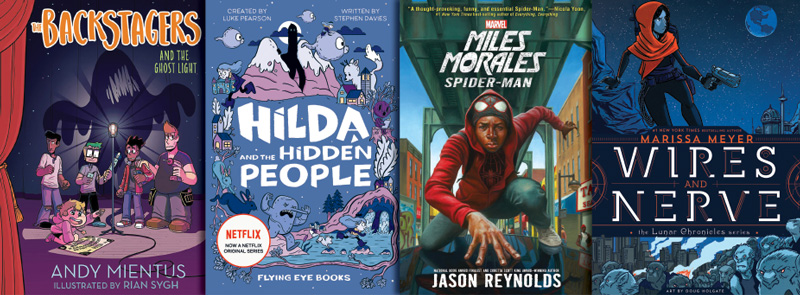




Add Comment :-
Be the first reader to comment.
Comment Policy:
Comment should not be empty !!!